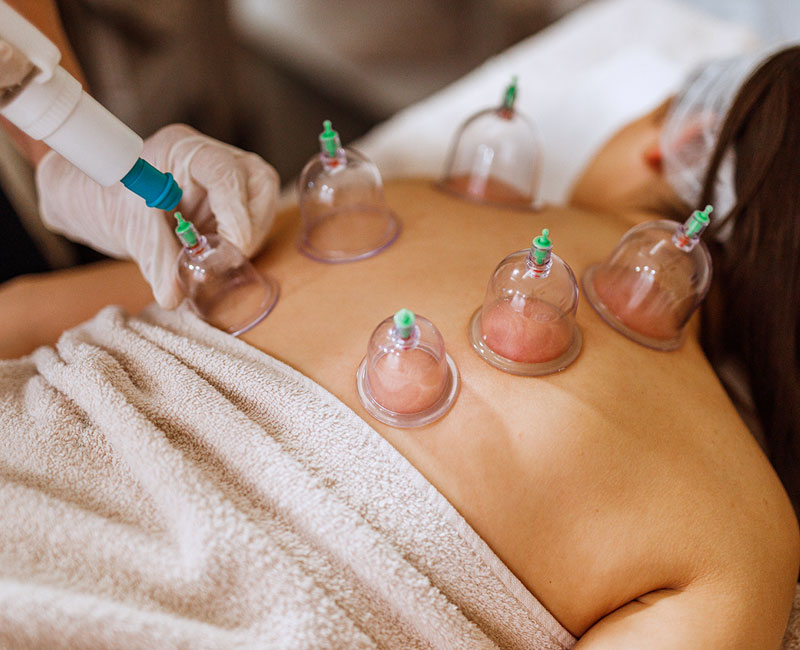

Cupping Therapy
Cupping is an alternative therapy that involves suctioning the skin with glass, plastic, or silicone cups. It may help improve blood flow, boost immune function, remove toxins, and reduce pain.
Cupping therapy is a therapeutic technique that utilizes a vacuum force created beneath a small vessel applied onto the skin’s surface. This approach focuses on blood and autologous healing substances in a specific area, stimulating metabolic activity, improving immune function, and stabilizing blood biochemistry.
Cupping is typically categorized into 2 primary procedures—wet and dry cupping. In both techniques, containers made from various materials are used to create a vacuum over a specific area of the skin.
Cupping practices have evolved, resulting in their classification into 5 primary categories:
- Technical Types: Cupping therapy encompasses a range of technical types, which include dry, wet, flash, and massage cupping types.
- Power of Suction: Cupping therapy can be applied with varying degrees of suction, typically categorized as light, medium, strong, or pulsatile suction.
- Methods of Suction: Cupping therapy can be performed using different methods, such as fire, manual, and electrical vacuum cupping methods.
- Additional Therapies: Cupping therapy can be combined with other therapies, including needle, mona, herbal, magnetic, laser, electrical stimulation, water, and aquatic cupping procedure.
- Conditions and area-specific: Cupping therapy can be customized to address particular conditions and target-specific areas, including cosmetic, sports-related, orthopedic, abdominal, facial, and gender-specific cupping therapies for females and males.
The Benefits of Cupping Therapy Include:
- promoting the skin’s blood flow
- changing the skin’s biomechanical properties
- increasing pain thresholds
- improving local anaerobic(without oxygen) metabolism
- reducing inflammation
- boosting cellular immunity
- altering pain signal processing
- using counter-irritation, or pain to reduce pain
- stimulating increased blood circulation through the release of nitric oxide
- stimulating the immune system with artificial local inflammation
- increasing the level of immune products, such as interferon and tumor necrotizing factor
- increasing the flow of lymph in the lymphatic system
- decreasing uric acid and both types of cholesterol
- changing the molecular structure and function of hemoglobin (Hb)
